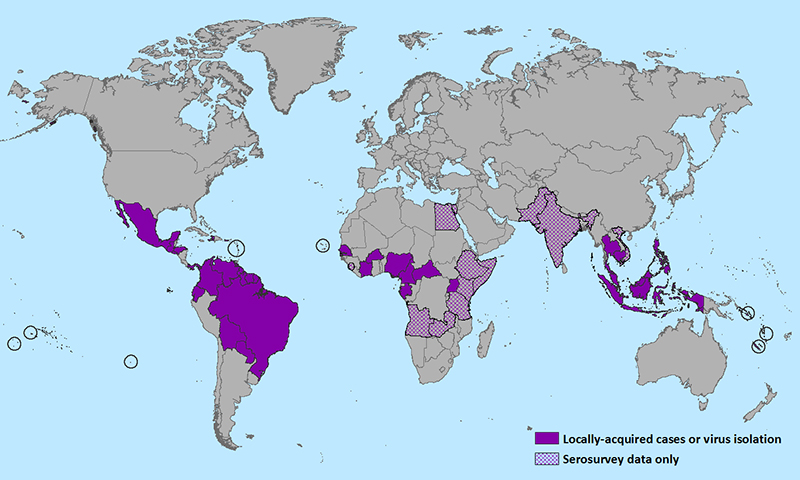|
|||||||||||||||
|

CLICK ON weeks 0 - 40 and follow along every 2 weeks of fetal development
|
|||||||||||||||||||||||||||
| Zika virus, linked to birth defects, is spreading
The Zika virus, possibly linked to serious birth defects in Brazil, has the potential to spread within the Americas, including parts of the United States, according to an international team of researchers tracking the spread of infectious diseases. The Zika virus, native to parts of Africa and Asia, has for the first time been introduced into the Americas where it is spreading locally among people who have not travelled abroad. There is no vaccine against the virus nor any antiviral treatment. Zika is generally a mild illness, spread by a day-biting mosquito. However, there is a worrisome association of infected mothers in Brazil giving birth to babies with small heads and underdeveloped brains (or microcephaly), according to Dr. Kamran Khan of St. Michael's Hospital, Toronto, Ontario, Canada.
The Centers for Disease Control say some travellers returning to the United States from Zika-affected areas have also been infected with the virus, which has the potential of allowing the virus to then spread locally. "The summer Olympic Games in Brazil in August heighten the need for awareness of this emerging virus," Dr. Khan wrote in a research letter published in The Lancet. To predict where Zika might spread, Dr. Khan and his team mapped the final destinations of international travellers leaving airports in Brazil from September 2014 to August 2015.
Members of the team from Oxford University mapped the global geography of (Aedes species) mosquitoes capable of transmitting Zika virus and then modeled the worldwide climate conditions necessary for the virus to spread between Aedes mosquitoes and humans. They estimated that more than 60 per cent of the populations of the United States, Argentina and Italy live in areas conducive to seasonal transmission of Zika virus.
"The world we live in is very interconnected now says Dr. Isaac Bogoch, a tropical infectious disease specialist at the Toronto General Hospital who contributed to the study. "Things don't happen in isolation anymore. Infections from the farthest corners of the world can quickly arrive on our doorstep." Funding for this study was provided by the Canadian Institutes of Health Research, the Wellcome Trust, the Bill & Melinda Gates Foundation, and the RAPIDD program of the Science & Technology Directorate, Department of Homeland Security, and the Fogarty International Center, National Institutes of Health. About St. Michael's Hospital http://www.eurekalert.org/pub_releases/2016-01/smh-zvh011416.php#.Vpr_2x4gIsg.mailto Recent articles related to microcephaly: Slow stem cell division causes small brain?
|
Jan 21, 2016 Fetal Timeline Maternal Timeline News News Archive
|
|||||||||||||||||||||||||||


